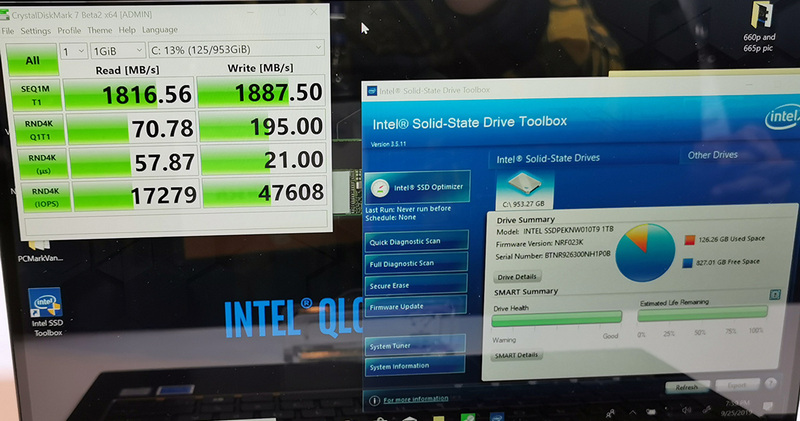
Photos from LegitReviews
At the computer exhibition held in September in South Korea, Intel introduced a new family of consumer SSDs - 665r. This is the second generation of drives that use QLC NAND; the differences with the previous one are generally small, but a significant increase in speed achieved through the use of 96-layer memory is noteworthy. Under the cut - results from the Intel test bench at the exhibition.
For the first time, the QLC NAND memory was introduced in the Intel 660p SSD series - it was born a little over a year ago. The new family uses the same Silicon Motion SM2263 controller and the same cell type, however, improvements have been made to its production technology - and now the memory has 96 layers instead of 64. Due to this, it was possible to reduce the chip area and increase the read / write speed.
It was the improvement in the speed characteristics of SSD with a minimum number of innovations that Intel demonstrated at its booth (shown on the KDPV). You see two identical laptops, one has an Intel 660p drive, and the other has a 665 TB with a capacity of 1 TB. The displays show the results of CrystalDiskMark benchmarks - screenshots are attached.


As can be seen from the results, the sequential read and write speed increased by about 40%, random read and write - by about 30%, which is very impressive, because only the process technology has changed. Here, of course, we must understand that the speed of the QLC cell strongly depends on the filling of its data bits, it is at the tail of the filling diagram that we see a subsidence of speed compared to, say, TLC. However, if we assume that 665r will be released in the near future at a price similar to 660r - and we have no reason to doubt it - the new product will become one of the most attractive positions in terms of price to performance ratios.